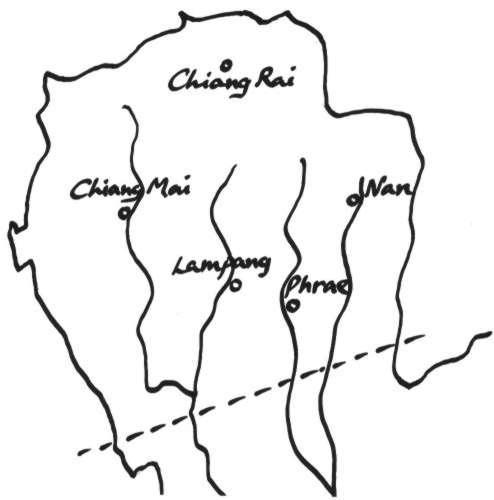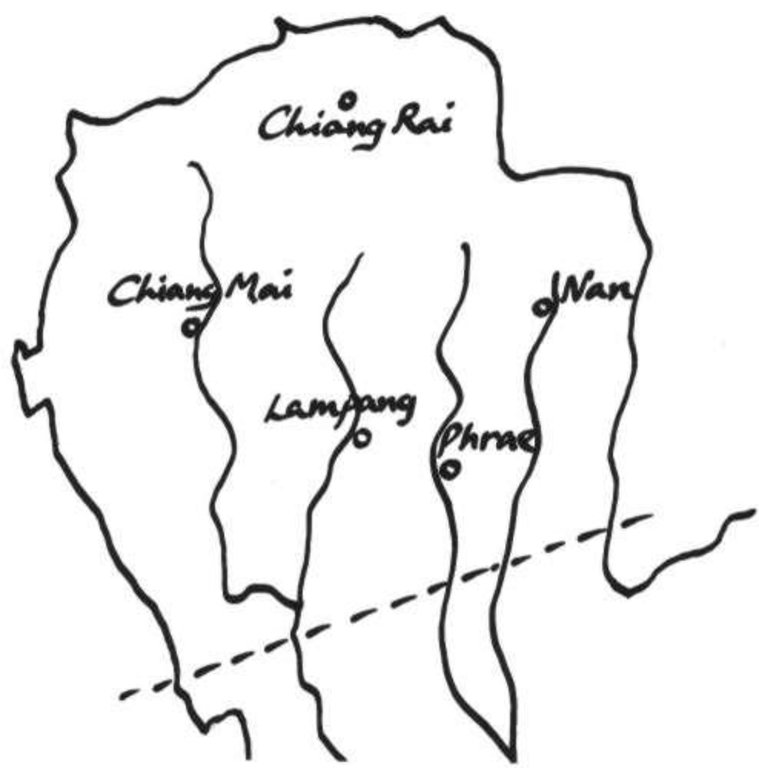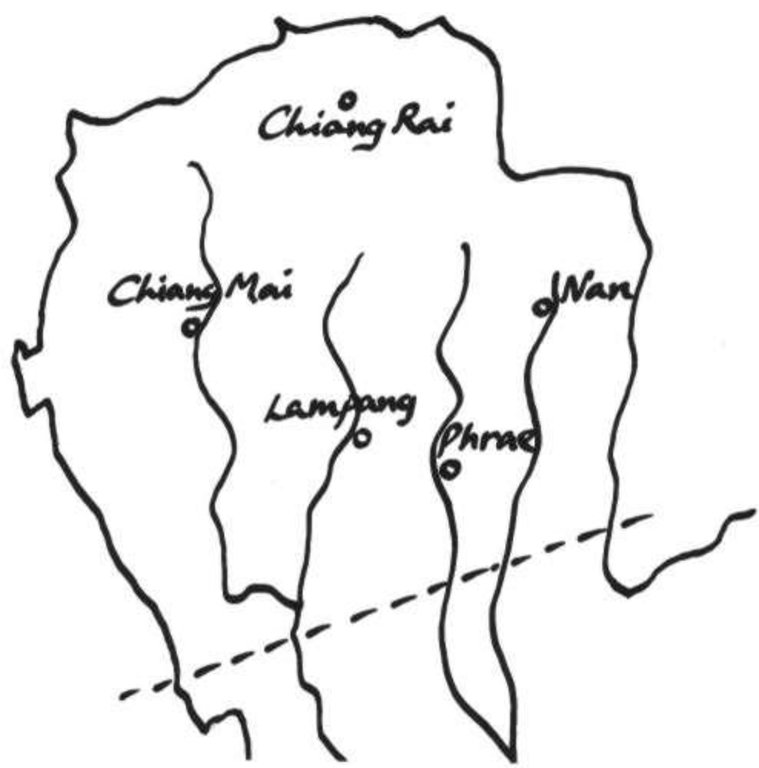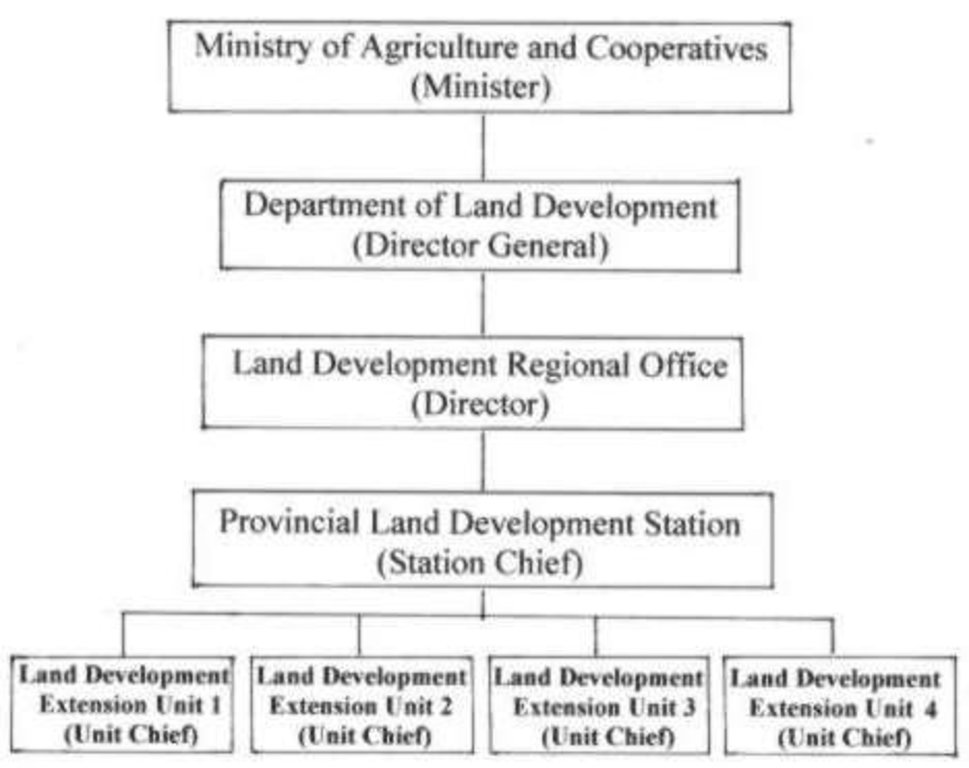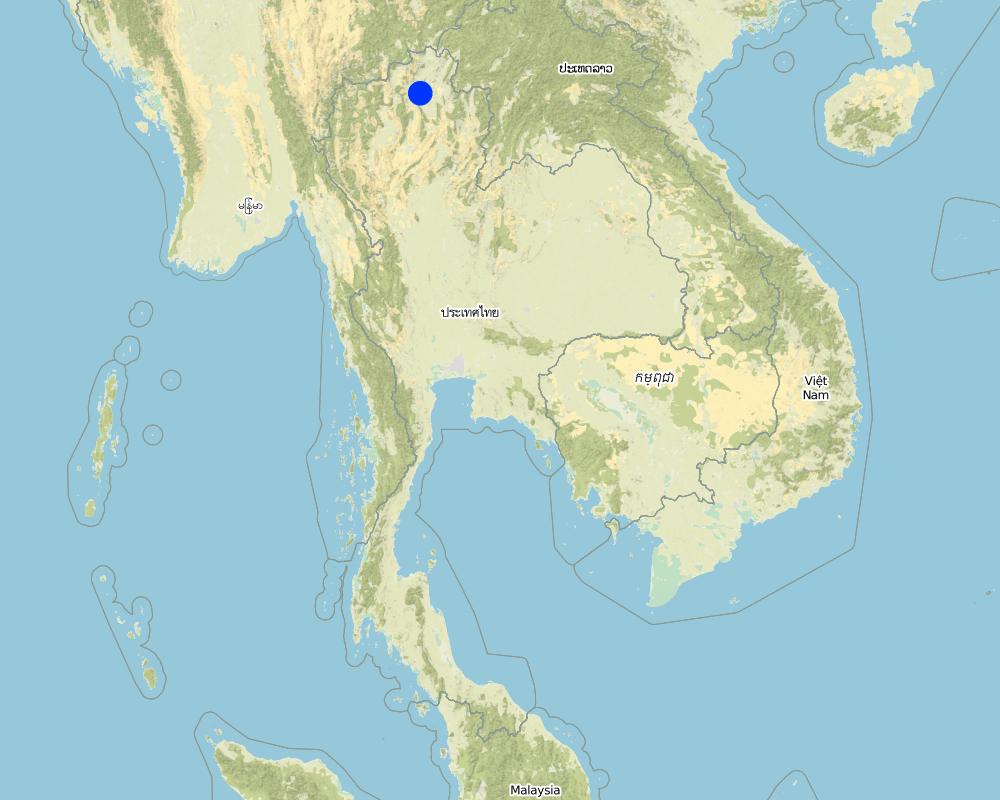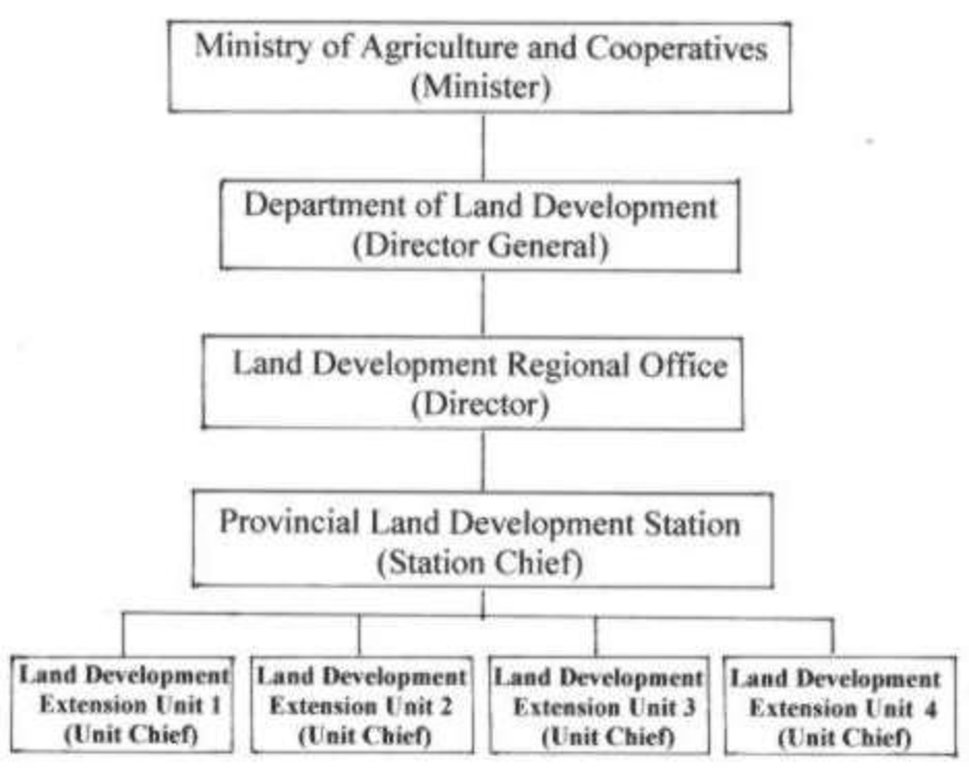Vegetative erosion control and conservation cropping system [ไทย]
- ผู้สร้างสรรค์:
- การอัพเดท:
- ผู้รวบรวม: Samran Sombatpanit
- ผู้เรียบเรียง: –
- ผู้ตรวจสอบ: Fabian Ottiger
approaches_2417 - ไทย
ดูส่วนย่อย
ขยายทั้งหมด ย่อทั้งหมด1. ข้อมูลทั่วไป
1.2 รายละเอียดที่ติดต่อได้ของผู้รวบรวมและองค์กรที่เกี่ยวข้องในการประเมินและการจัดเตรียมทำเอกสารของแนวทาง
ผู้เชี่ยวชาญ SLM:
Boonchee Sawatdee
66-1-9513859, 66-53-890109
boonchee@thai2k.com
LDD Regional Office 6
Amphur Maerim, Chiang Mai 50180
ไทย
ผู้เชี่ยวชาญ SLM:
ชื่อของโครงการซึ่งอำนวยความสะดวกในการทำเอกสารหรือการประเมินแนวทาง (ถ้าเกี่ยวข้อง)
World Association of Soil and Water Conservation (WASWC) - จีนชื่อของโครงการซึ่งอำนวยความสะดวกในการทำเอกสารหรือการประเมินแนวทาง (ถ้าเกี่ยวข้อง)
Swiss Agency for Development and Cooperation (DEZA / COSUDE / DDC / SDC) - สวิตเซอร์แลนด์1.3 เงื่อนไขที่เกี่ยวข้องกับการใช้ข้อมูลที่ได้บันทึกไว้ผ่านทาง WOCAT
ผู้รวบรวมและวิทยากรหลักยอมรับเงื่อนไขเกี่ยวกับการใช้ข้อมูลที่ถูกบันทึกผ่านทาง WOCAT:
ใช่
1.4 การอ้างอิงถึงแบบสอบถามเรื่องเทคโนโลยี SLM

Growing cover crops for weed control [ยูกันดา]
Cultivating leguminous crops in weed prone fields to help overgrow and kill the weeds
- ผู้รวบรวม: Sunday Balla Amale
2. คำอธิบายของแนวทาง SLM
2.1 การอธิบายแบบสั้น ๆ ของแนวทาง
This approach is 'the way' or 'how' the 'vegetative erosion control and conservation cropping system' has been implemented in the Upper North region of Thailand.
2.2 การอธิบายอย่างละเอียดของแนวทาง
การอธิบายอย่างละเอียดของแนวทาง:
Aims / objectives: The purpose of this approach is to have sloping land used in a sustainable way, by planting hedgerows along the contour line, allowing enough space for growing cash- and other crops. In the process, government officers will work with sloping land farmers, promoting them to do the system by giving assistance in the form of necessary farm inputs and wage for doing the work. The work starts with site selection, land preparation, alignment of contour lines, establishing hedgerows, growing crops -- cash crops and tree crops, etc. At the same time extension workers will provide farmers with training in various aspects of SWC, and visits to demonstration fields and farms.
2.3 รูปภาพของแนวทาง
2.5 ประเทศ ภูมิภาค หรือสถานที่ตั้งที่ได้นำแนวทางไปใช้
ประเทศ:
ไทย
ภูมิภาค/รัฐ/จังหวัด: :
Upper North
Map
×2.7 ประเภทของแนวทาง
- ใช้โครงงานหรือแผนงานเป็นฐาน
2.8 เป้าหมายหรือวัตถุประสงค์หลักของแนวทาง
The Approach focused mainly on SLM with other activities (Cropping system that will enable farmers to earn reasonable income for their living.)
1. To reduce soil erosion. 2. To improve soil fertility. 3. To increase crop yied and income.
The SLM Approach addressed the following problems: Accelerated soil erosion and land degradation, low soil productivity, poor water conservation, low income, damaged environment.
2.9 เงื่อนไขที่เอื้ออำนวยหรือเป็นอุปสรรคต่อการนำเทคโนโลยีภายใต้แนวทางนี้ไปปฏิบัติใช้
บรรทัดฐานและค่านิยมทางสังคม วัฒนธรรม ศาสนา
- เป็นอุปสรรค
Low literacy rate
Treatment through the SLM Approach: Improve education.
การจัดตั้งระดับองค์กร
- เป็นอุปสรรค
The number of extension workers is few.
Treatment through the SLM Approach: Employ more of them.
กรอบแนวทางในการดำเนินการด้านกฎหมาย (การถือครองที่ดิน สิทธิในการใช้ที่ดินและน้ำ)
- เป็นอุปสรรค
Farmers without land title are reluctant to implement SWC.
Treatment through the SLM Approach: Promote land reform programme.
This type of approach/technology does not need too much of involvement in the land use right or ownership, particularly when there is no major disturbance of soil surface for constructing structural measures.
ความรู้เกี่ยวกับ SLM การเข้าถึงการสนับสนุนด้านเทคนิค
- เป็นอุปสรรค
Technologies take long time to show benefit.
Treatment through the SLM Approach: 1. Find technologies which give short-term benefit. 2. Create awareness to farmers.
3. การมีส่วนร่วมและบทบาทของผู้มีส่วนได้ส่วนเสียที่เกี่ยวข้อง
3.1 ผู้มีส่วนได้ส่วนเสียที่เกี่ยวข้องในแนวทางนี้และบทบาท
- ผู้ใช้ที่ดินระดับท้องถิ่นหรือชุมชนระดับท้องถิ่น
Specific ethnic groups: H'mong, Akha, Kare, etc. Also poor peasant farmers
- รัฐบาลแห่งชาติ (ผู้วางแผน ผู้ทำการตัดสินใจ)
Land Development Department
- องค์การระหว่างประเทศ
ถ้ามีผู้มีส่วนได้ส่วนเสียหลายคนที่เกี่ยวข้องให้ระบุหน่วยงานตัวแทน:
Alley cropping was designed by IITA and grass strip by Australian specialists. They were introduced into Thailand around 1985 and subsequently adapted by national specialists for applying in the Northern Agricultural Land Development Project, supported by the World Bank.
3.2 การเกี่ยวข้องของผู้ใช้ที่ดินระดับท้องถิ่นหรือชุมชนระดับท้องถิ่นในช่วงต่างๆของแนวทาง
| ความเกี่ยวข้องของผู้ใช้ที่ดินระดับท้องถิ่นหรือชุมชนระดับท้องถิ่น | ระบุผู้ที่มีส่วนเกี่ยวข้องและอธิบายกิจกรรม | |
|---|---|---|
| การริเริ่มหรือการจูงใจ | ไม่มี | |
| การวางแผน | ไม่ลงมือ | public meetings |
| การดำเนินการ | ไม่ลงมือ | responsibility for minor steps |
| การติดตามตรวจสอบหรือการประเมินผล | ไม่ลงมือ | public meetings; |
| Research | ไม่มี |
3.3 แผนผังแสดงขั้นตอนการทำงาน (ถ้ามี)
3.4 การตัดสินใจเลือกใช้เทคโนโลยี SLM
ระบุผู้ที่ทำการตัดสินใจเลือกเทคโนโลยีมากกว่าหนึ่งวิธีไปปฏิบัติใช้:
- ผู้เชี่ยวชาญ SLM เป็นผู้ตัดสินใจหลัก ที่ติดตามให้คำปรึกษากับผู้ใช้ที่ดิน
การอธิบาย:
consultative.
Decisions on the method of implementing the SLM Technology were made by mainly by SLM specialists with consultation of land users. consultative. With financial assistance provided
4. การสนับสนุนด้านเทคนิค การสร้างขีดความสามารถ และการจัดการด้านความรู้
4.1 การสร้างขีดความสามารถ / การอบรม
ได้มีการจัดอบรมให้แก่ผู้ใช้ที่ดินหรือผู้มีส่วนได้ส่วนเสียคนอื่น ๆ หรือไม่:
ใช่
ให้ระบุว่าใครเป็นผู้ได้รับการอบรม:
- ผู้ใช้ที่ดิน
- extensionists/trainers, school children/students,
รูปแบบการอบรม:
- กำลังดำเนินการ
- เกษตรกรกับเกษตรกร
- ใช้พื้นที่ทำการสาธิต
- จัดการประชุมสู่สาธารณชน
- จัดคอร์ส
หัวข้อที่พูด:
Short training (1-2 days) in cropping system and land use management at a nearby locality where technicians explain how the approach is useful for farmers and how to do.
4.2 การบริการให้คำแนะนำ
ผู้ใช้ที่ดินมีการเข้าถึงการรับบริการให้คำปรึกษาหรือไม่:
ใช่
ระบุว่ามีบริการให้คำปรึกษาหรือไม่:
- ไปเยี่ยมชมสถานที่
การอธิบาย/แสดงความคิดเห็น:
Name of method used for advisory service: TAF; Key elements: Training, Action, Follow-up.; 1) Advisory service was carried out through: Government's existing extension system. Extension staff: Mainly government employees 3) Target groups for extension: land users; Activities: To know how to cope with soil degradation problem
Advisory service is inadequate to ensure the continuation of land conservation activities; There are too few SWC extensionists to work with farmers efficiently, making the activity not so well handled and maintained.
4.3 การเสริมความแข็งแกร่งให้กับสถาบัน (การพัฒนาองค์กร)
สถาบันได้รับการจัดตั้งขึ้นมาหรือเสริมความแข็งแกร่งโดยแนวทางนี้หรือไม่:
- ใช่ ปานกลาง
ระบุระดับของสถาบันที่ได้รับการเสริมความแข็งแกร่งหรือจัดตั้งขึ้นมา:
- ท้องถิ่น
ระบุประเภทของการให้ความช่วยเหลือสนับสนุน:
- การสร้างขีดความสามารถ / การอบรม
4.4 การติดตามตรวจสอบและประเมินผล
การติดตามตรวจสอบและประเมินผลเป็นส่วนหนึ่งของแนวทางหรือไม่:
ใช่
ความคิดเห็น:
technical aspects were ad hoc monitored through observations; indicators
There were few changes in the Approach as a result of monitoring and evaluation: 1. Change in cropping system to fit the farmers' need and market. 2. Some farmers have expanded more area for SWC approach.
4.5 การวิจัย
การวิจัยเป็นส่วนหนึ่งของแนวทางหรือไม่:
ใช่
ระบุหัวข้อเรื่อง:
- สังคมวิทยา
- เศรษฐศาสตร์หรือการตลาด
- เทคโนโลยี
ให้ข้อมูลเพิ่มเติมและให้ระบุผู้ทำการวิจัย:
Research mainly concerns technology development and efficiency in decelerating soil ersoion and improving soil fertility.
Research was carried out both on station and on-farm
5. การสนับสนุนด้านการเงินและวัสดุอุปกรณ์
5.1 ระบุงบประมาณประจำปีสำหรับแนวทาง SLM นี้
ถ้าหากว่างบประมาณประจำปีไม่เป็นที่ทราบแน่นอน ให้ระบุช่วงลงไป:
- 10,000-100,000
แสดงความคิดเห็น (แหล่งของการระดมทุน ผู้บริจาคคนสำคัญ):
Approach costs were met by the following donors: government (national - Dept. of Land Development.): 100.0%
5.2 การสนับสนุนด้านการเงิน / วัสดุอุปกรณ์ให้แก่ผู้ใช้ที่ดิน
ผู้ใช้ที่ดินได้รับการสนับสนุนด้านการเงิน / วัสดุอุปกรณ์ไปปฏิบัติใช้เทคโนโลยีหรือไม่:
ใช่
5.3 เงินสนับสนุนสำหรับปัจจัยนำเข้า (รวมถึงแรงงาน)
- การเกษตร
| ระบุปัจจัยนำเข้าที่ได้รับการสนับสนุน | เห็นด้วยระดับไหน | ระบุเงินสนับสนุน |
|---|---|---|
| เมล็ด | ได้รับการช่วยเหลือทางการเงินแบบเต็ม | Only during establishment |
| ปุ๋ย | ได้รับการช่วยเหลือทางการเงินแบบเต็ม | Only during establishment |
| Biocides | ได้รับการช่วยเหลือทางการเงินแบบเต็ม | Only during establishment |
- โครงสร้างพื้นฐาน
| ระบุปัจจัยนำเข้าที่ได้รับการสนับสนุน | เห็นด้วยระดับไหน | ระบุเงินสนับสนุน |
|---|---|---|
| community infrastructure | ได้รับการช่วยเหลือทางการเงินแบบเต็ม | Only during establishment |
ถ้าแรงงานโดยผู้ใช้ที่ดินเป็นปัจจัยนำเข้าที่มีอยู่มากมาย ระบุด้วยว่าเนื่องจาก:
- ให้ค่าตอบแทนด้วยการสนับสนุนด้านวัสดุอุปกรณ์อื่น ๆ
ความคิดเห็น:
Planting materials, training, advise
5.4 เครดิต
มีการจัดหาเครดิตมาให้ภายใต้แนวทาง SLM หรือไม่:
ไม่ใช่
6. การวิเคราะห์ผลกระทบและการสรุป
6.1 ผลกระทบของแนวทาง
ช่วยให้ผู้ใช้ที่ดินนำเอาเทคโนโลยี SLMไปใช้และบำรุงรักษาสภาพไว้ได้หรือไม่:
- ไม่ใช่
- ใช่ เล็กน้อย
- ใช่ ปานกลาง
- ใช่ อย่างมาก
They are more aware of what they should do to improve soil and water management such as mulching, green manuring fertilizer application and addition of organic matter.
Did other land users / projects adopt the Approach?
- ไม่ใช่
- ใช่ เล็กน้อย
- ใช่ ปานกลาง
- ใช่ อย่างมาก
Such as Thai-Australian Highland Development Project
6.3 ความยั่งยืนของกิจกรรมของแนวทาง
ผู้ใช้ที่ดินสามารถทำให้สิ่งต่างๆ ที่ได้ปฏิบัติใช้โดยแนวทางนี้ยั่งยืนได้หรือไม่ (โดยไม่มีการสนับสนุนจากภายนอก):
- ใช่
6.4 จุดแข็งและข้อได้เปรียบของแนวทาง
| จุดแข็ง / ข้อได้เปรียบของแนวทางในทัศนคติของผู้ใช้ที่ดิน |
|---|
| 1. Improve soil fertility and productivity |
| 2. Increase income |
| 3. Attain sustainable land use. |
| จุดแข็ง / ข้อได้เปรียบของแนวทางในทัศนคติของผู้รวบรวมหรือวิทยากรหลัก |
|---|
| 1. The approach can reduce soil loss/runoff (How to sustain/ enhance this strength: Try to integrate annual cash crops and fruit trees) |
| 2. Improve soil fertility |
| 3. Conserve soil moisture |
| 4. Increase yield/income |
| 5. Preserve the environment |
| 6. Easily implemented by farmers |
| 7. It requires low cost. |
6.5 จุดอ่อน / ข้อเสียเปรียบของแนวทางและวิธีในการแก้ไข
| จุดอ่อน / ข้อเสียเปรียบในทัศนคติของผู้ใช้ที่ดิน | สามารถแก้ไขปัญหาได้อย่างไร |
|---|---|
| 1. Require more labour to create and maintain | 1. Grow fast-growing tree specie, |
| 2. Certain part of the land cannot be used to grow crops. | 2. Hire more labourers from the increased income. |
| จุดอ่อน / ข้อเสียเปรียบในทัศนคติของผู้รวบรวมหรือวิทยากรหลัก | สามารถแก้ไขปัญหาได้อย่างไร |
|---|---|
| 1. More labour intensive than normal farming practice | Good labour management |
7. การอ้างอิงและการเชื่อมต่อ
7.1 วิธีการหรือแหล่งข้อมูล
- ไปเยี่ยมชมภาคสนาม การสำรวจพื้นที่ภาคสนาม
- การสัมภาษณ์กับผู้ใช้ที่ดิน
7.2 การอ้างอิงถึงสิ่งตีพิมพ์
ชื่อเรื่อง ผู้เขียน ปี ISBN:
Sajjapongse, A.., C.Anecksamphant and S. Boonchee. 2000. ASIALAND Management of Sloping Land Network. Special Lecture, LDD Technical Meeting, February 15-18, 2000, Chjiang Mai, ThailandOther documents of IBSRAM
ช่องทางในการสืบค้น และราคา:
Department of Land Development, Bangkok 10900, ThailandIBSRAM. P.O. Box 9-109, Bangkok 10900, Thailand
ชื่อเรื่อง ผู้เขียน ปี ISBN:
Other documents of IBSRAM
ช่องทางในการสืบค้น และราคา:
IBSRAM. P.O. Box 9-109, Bangkok 10900, Thailand
ลิงก์และโมดูล
ขยายทั้งหมด ย่อทั้งหมดลิงก์

Growing cover crops for weed control [ยูกันดา]
Cultivating leguminous crops in weed prone fields to help overgrow and kill the weeds
- ผู้รวบรวม: Sunday Balla Amale
โมดูล
ไม่มีโมดูล


